It is one of the most visited tourist destinations in the world. India serves as the ultimate travel destination for all types of tourists, with a rich culture, history, and natural beauty. The architectural wonders by the country which are examples of its cultural heritage like the Taj Mahal, the forts of Rajasthan and ancient temples.
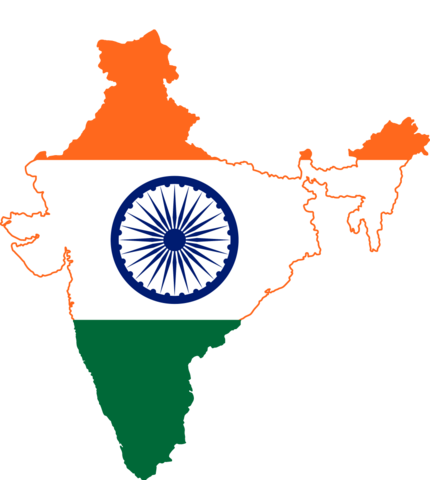
From the summits of the Himalayas to the tropical beaches of Goa and Kerala, India’s widely varied geography makes it an ideal place for everyone. Couple this with the deep-rooted spirituality of places like Varanasi, Rishikesh, and Bodh Gaya, and it is no wonder, that India is a popular destination for seekers on the path of enlightenment and solace.
In India, adventure tourism is gaining popularity too — Leh-Ladakh for trekking, biking and mountaineering, Kerala and Uttarakhand for yoga and meditation retreats. Indian food, as diverse as the country’s regions, adds another dimension to the tourism experience. And from street food to royal meals, every region has an adventure waiting on your plate.
Besides, the lively enthusiasm with which India celebrates its festivals such as Diwali, Holi, and Durga Puja just adds to the overall festive spirit for a traveler. The warm hospitality frequently referred as “Atithi Devo Bhava” (Guest is God) makes tourists feel welcome and cherished.
Taj Mahal (Agra)
The Taj Mahal is located in the city of Agra in Uttar Pradesh, India and is one of the most recognized monuments in the world as well as a monument for eternal love. The breathtaking white marble mausoleum was built by Mughal Emperor Shah Jahan in memory of his beloved wife, who died giving birth to their 14th child in 1631. The Taj Mahal was commissioned in 1632, completed in 1653, and involved thousands of artisans, craftsmen, and laborers. The Taj Mahal was designed by Ustad Ahmad Lahauri, and is a fine example of Mughal architecture as it incorporates elements of Persian, Ottoman, and Indian design.
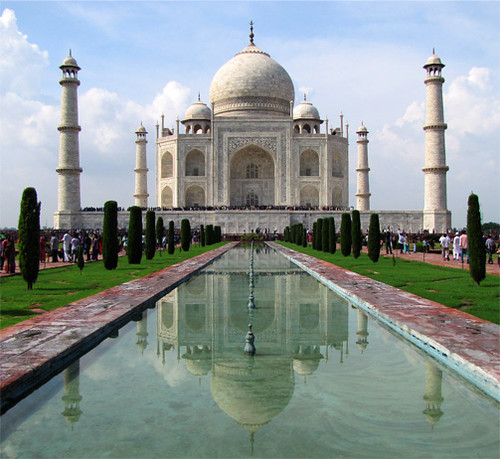
It sits on the banks of the Yamuna River, within a sprawling complex that encompasses lush gardens, reflecting pools, a mosque and a guest house. The main dome stands at a height of 35 meters and is encircled by four slightly outward-leaning minarets that serve to protect against an earthquake. With it symmetrical layout and complex carvings, calligraphy, and inlaid precious stones, the Taj Mahal is an ideal example of the Mughal focus on beauty and majesty.
Millions from different parts of the globe visit here every year as Taj Mahal is a UNESCO World Heritage site. It’s one of the Seven Wonders of the Modern World, a testament to the eternal love story of Shah Jahan and Mumtaz Mahal. The monument’s majesty is all the more compelling at sunrise and sunset, when the shifting light gives a gold leaf sheen to the marble skin. The Taj Mahal is an experience you can’t be missed if you are an architecture lover, a history lover or just a lover of beauty.
Address: Taj Mahal, Dharmapuri, Forest Colony, Tajganj, Agra, Uttar Pradesh, India.
Qutub Minar (Delhi)
Qutub Minar — Delhi’s Top Historical Monument The Qutub Minar, located at Mehrauli in Delhi, is an extremely iconic and a symbolic tower that attracts millions of tourists from all over the world every year to India. At a towering 73 meters, this is the tallest brick minaret globally, and one of Indo-Islamic Afghan architecture’s most incredible examples. Constructed in 1193 by the first Sultan of Delhi, Qutb-ud-Din Aibak, the Qutub Minar was later finished by his descendants Iltutmish and Firoz Shah Tughlaq. The tower was built to commemorate the success of the Delhi Sultanate in capturing the last remaining Hindu state of Delhi.

Qutub Minar has exquisite carving and Arabic inscriptions and striking perfection of design intermixing Persian styles, Afghan and Indian styles. The bell tower, which is said to be the actual place that inspired the creation of the home itself, is adorned by several other structures such as the Quwwat-ul-Islam Mosque, and the Iron Pillar which is known for its resistance to rust. The base of the tower is square, but the upper floors are cylindrical, and detailed carvings and Qur’anic verses are printed along the surface. Every floor of the tower is embellished in a different design, and its construction still stands as a testimony to the architectural prowess of the time.
Its architectural beauty and grandeur is widely respected and the Qutub minar is also a UNESCO world heritage site and sees millions of tourists every year. It serves as a great introduction to the Delhi Sultanate architectural marvels and the colorful Indian cultural heritage. If you have an inclination for history or even craftsmanship of ancient times, Qutub Minar is one of the places to visit in Delhi.
Address: Qutub Minar, Mehrauli, New Delhi, India.
Jaipur City (Jaipur)
Jaipur, the capital of Rajasthan, is also called the justifying name “Pink City” as it is famous for pink colors of buildings. In 1727, Maharaja Jai Singh II established Jaipur, a city that remains a testament to the grandeur and opulence of Rajasthan’s royal past. It is one of India`s most colorful and culturally unique cities, famous for its lovely palaces, forts and temples in addition to its busy markets and handicrafts. Unlike other ancient Indian cities, the city’s early plan stressed planning the streets to be wide and organized in a grid fashion.
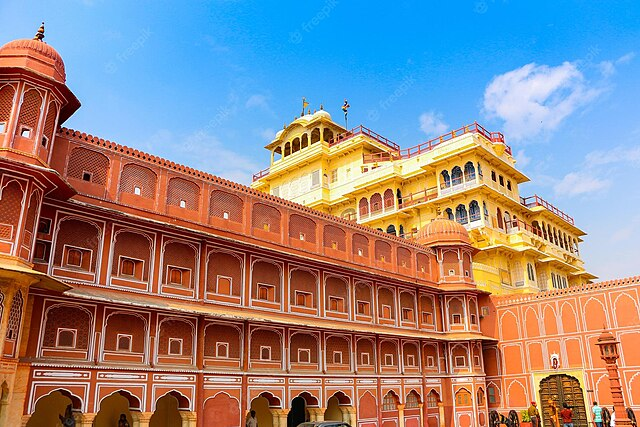
Jaipur’s most well-known sites include the impressive Amber Fort, an expansive hilltop fort known for its breathtaking views and intricate domed architecture, the City Palace combining Mughal and Rajasthani elements, and the Hawa Mahal — or “Palace of Winds” — a five-story edifice with hundreds of windows designed for royal women to watch street life while remaining unseen. Jaipur is also home to the Jantar Mantar, an astronomical observatory built by Jai Singh II, which provides insight into the advanced scientific understanding of the period.
Visitors can also delight in Jaipur’s charming culture, including its lively festivals, colorful markets, and rich traditions, making it an excellent destination for a dose of Rajasthan’s beauty. With ornate and colourful jewelry, textiles and mouthwatering Rajasthani dishes, the city is a feast for the senses for travelers. A UNESCO World Heritage site, Jaipur is also a key stop on the Golden Triangle, including Delhi and Agra, and draws millions of tourists each year.”
Address: Jaipur, Rajasthan, India.
Kerala Backwaters (Kerala)
The Kerala backwaters, a breathtaking system of lagoons, lakes, rivers and canals, are one of India’s most beautiful and peaceful natural environments. Kerala’s backwaters are a network of rivers, lakes and lagoons that span over 900 kilometers of coastline, flanked on either side by slender coconut palms and rice paddies. These pools are an essential part of the local landscape supporting both agriculture as well as fishing, and have turned out to be one of the rare and the most tranquil vacation spot in India.
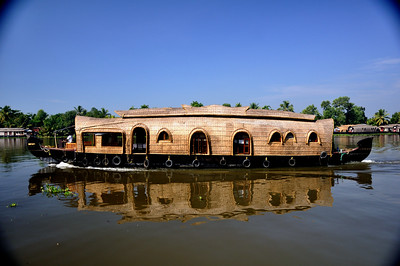
A cruise on a traditional houseboat is the best way to experience the backwaters. Each vessel, called a kettuvallams (meaning “tied boat” at the local dialect) embellished with wooden exteriors and modern-day amenities provides a unique way for visitors to experience Kerala’s rural beauty. The houseboats glide through the palm-lined canals, past villages, paddy fields and islands that shelter birds, wildlife and other diverse ecosystem. You can also start these backwater tours from Alappuzha, Kumarakom, and Kollam.
Apart from houseboats, Kerala backwaters include numerous pretty sites to see like the calm Vembanad Lake – the biggest lake in Kerala– and the misty Pathiramanal Island. The vast and very special ecosystem, beautiful surroundings, and nature connects people, apply to Honeymooners, and those who want to stay away from the busy life of cities to this part of the nature. A visit to the backwaters also affords a chance to see Kerala’s vibrant cultural traditions up close – boat races, Kathakali performances, and local cuisine galore.
Address: Kerala Backwaters, Alappuzha, Kollam, and Kumarakom, Kerala,
Web Address: https://www.keralatourism.org
Gateway of India (Mumbai)
Grand monument located in Mumbai, India, the Gateway of India offers a stunning glimpse into the country’s history and is a marvel of architectural engineering all on its own. Constructed in the British colonial era, in 1924, the Gateway was intended to celebrate the visit to India of King George V and Queen Mary in 1911. A harmonious mix of Hindu and Muslim architecture, the monument towers 26 meters and features an eclectic montage of Indo-Saracenic, Islamic, and British style. Located at the waterfront, Gateway has an exotic view of Arabian Sea.
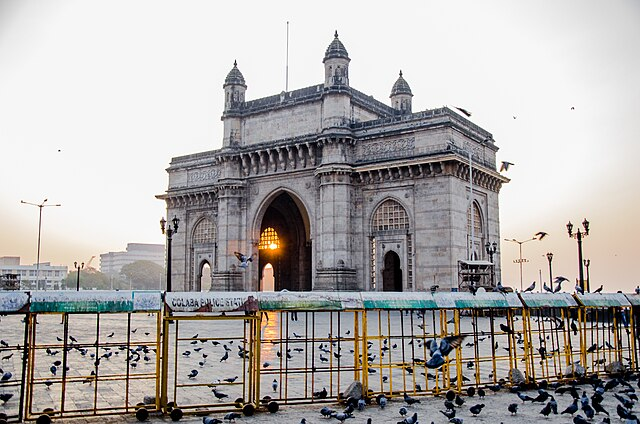
The monument’s gigantic arches, detailed carvings and graceful design draw millions of visitors a year. The last British soldiers to leave India, thereby formally ending British colonial rule in the country, passed through here in 1948; it was one of the most iconic moments in India’s history.
Today, the Gateway of India represents not just India’s freedom, but also is an iconic symbol of the throbbing city of Mumbai. Tourists can also take beautiful short boat trips from girder, with the memorial in full view in the backdrop of the infinite-lavishness of sea. So whether you’re a history buff, an architectural aficionado, or just a traveler looking for a pretty view, the Gateway of India will not disappoint.
Mecca Masjid (Hyderabad)
Mecca Masjid, Hyderabad, What makes this particular mosque of Hyderabad special is not only its spiritual significance but the architectural beauty of the mosque as well, making it one of the largest and oldest mosques of India. Built during the reign of Sultan Mohammed Quli Qutb Shah, the founder of Hyderabad, the mosque was completed in 1694.
McDonald has listed the mosque as being named after the city of Mecca because the bricks that were used to build the mosque reportedly came from the holy city of Mecca, and it is regarded as a revered mosque. It has a capacity of more than 10,000 worshippers at a time, making it one of the largest mosques in the country.
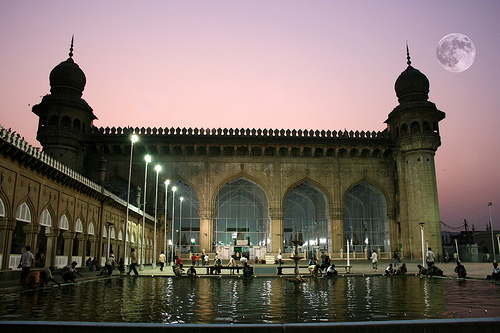
Mecca Masjid boasts an exquisite architecture that is an amalgamation of Mughal, Persian, and Hindu architectural styles, including horseshoe arches, intricate carvings, and wide courtyards. Its grand hallette, decorated with beautiful floral designs and marble work, will leave you mesmerized. The mosque stands near the historical monument of Charminar, the landmark in Hyderabad old city.
The mosque is set against combined backdrop of placid courtyards and gigantic gates, which give a really good retreat for pilgrims and tourists. Stylized, one of the hallmarks of this mosque is its regimented, high-blanket floors, which absorb the tremendous footfall of Hyderabad, revealing significance even if you are not from the district. The mosque also serves as an important center for the spiritual life of Hyderabad, hosting prayers, Islamic lectures, and significant ceremonies.
Mysore Palace (Mysore)
Open in a new window One of the most important landmarks in India, Mysore Palace in Mysore Karnataka is an architectural masterpiece and one of India’s largest royal citadels. The palace is the official residence of Wadiyar dynasty, the rulers of Mysore from the 14th century to the middles part of the 20th century. This current structure was built in 1912, following a fire that destroyed the previous palace. The Mysore Palace is built in the Indo-Saracenic style, featuring a blend of Hindu, Muslim, Rajput and Gothic elements. Elaborate scepter’s and magnificent stained glass windows all adorn the great façade, just a surface layer of the church.

The palace complex stretches over 3 acres and includes an exquisite series of courtyards, gardens and temples. Among the palace’s most stunning highlights is the soaring Durbar Hall, which is where ruler was holding court. The palace museum is also worth visiting with a collection of artefacts, paintings and royal costumes giving an insight into the living style of the Wadiyar family.
The palace is especially famous when lit up as thousands of light bulbs adorn several portions of the building during the Dussehra festival. Thousands of tourists visit Mysore Palace every year to experience the grandeur and history behind this royal structure. The palace is now a symbol of the historical importance of the city and is one of the tourist spots for people interested in history and architect.
Golden Temple (Amritsar)
The Golden Temple, or Harmandir Sahib, is one of the holiest pilgrimage sites for Sikhs around the world. This structure located in Amritsar, Punjab is one of the most visited places every year because of its importance in the country and the beautiful craftsmanship. Visitors can feel calm and peaceful in the temple, which is located in the middle of a pool of water. The bright golden exterior of the building, which reflects the sunlight, represents the openness and inclusiveness of Sikhism that welcomes people from all backgrounds.
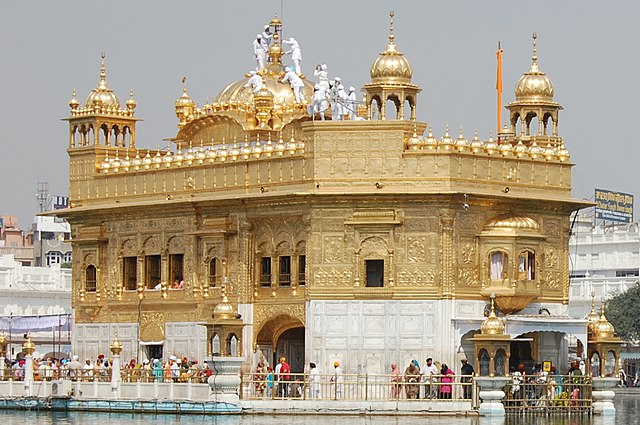
Visitors can enjoy the sacred atmosphere whilst listening to the repetitive reading of the Sikh holy text. The holy complex houses the central Gurdwara, which has the Guru Granth Sahib — the Sikh holy scripture. The architecture of the temple is an intricate blend of Hindu and Muslim styles, showcasing the rich cultural diversity of India.
In addition to its religious significance, the Golden Temple is famous for its langar (community kitchen) which provides free meals to thousands of people each day, regardless of their faith or background. This practice reflects the values of equality, selfless service, and humility, which are central to Sikhism. The Golden Temple: A Divine Place for Everyone
Address: Golden Temple Road, Amritsar, Punjab,
Website: https://www.srigranth.org
Red Fort (Delhi)
The Red Fort is a UNESCO World Heritage site and one of the magnificent symbols of India’s Mughal heritage and splendour. Located in the center of Delhi, this architectural wonder was built in the mid-17th century by Emperor Shah Jahan. We begin with a visit to the massive red sandstone walls of the fort, which span more than 2 kilometers and attest to the strength and architectural prowess of the Mughals.15 Top ski Resorts in India1 right now
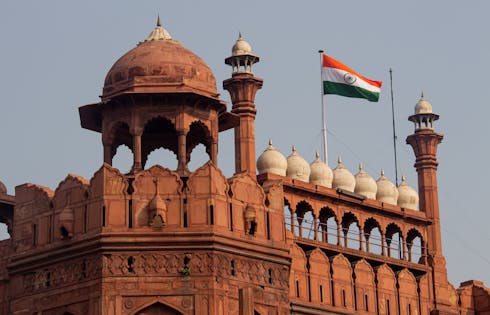
Within the fort, you can explore significant sites like the Diwan-i-Aam (Hall of Public Audience), Diwan-i-Khas (Hall of Private Audience), and the resplendent Pearl Mosque. All these buildings are designed with Mughal architecture, boasting of exquisite carvings and fine marble work.
The Red Fort also holds significance to India’s independence struggle, as that’s where India’s first Prime Minister Jawaharlal Nehru first unfurled the national flag on the eve of Independence, on August 15, 1947. Every year, Indian Prime Minister addresses the nation from the ramparts Red Fort, that’s why Red Fort gives an identity of India’s freedom.
Explore the Red Fort: Exploring the Red Fort is essentially a journey back in time, giving an insight into the opulence of the Mughal Empire and its historical and cultural significance in India.
Address: Netaji Subhash Marg, Lal Qila, Chandni Chowk, New Delhi.
Ellora Caves (Maharashtra)
Ellora Caves, Maharashtra Ancient Indian rock-cut temples These caves boast remarkable sculptures, enormous temples, and other art, which reflect the religious unity that existed back then. The complex includes 34 caves that date from the 5th to the 10th century and are divided into Buddhist, Hindu and Jain caves.
Of these, the Kailasa Temple (Cave 16) stands out as an engineering wonder. Largest monolithic structure in the world carved into a single monolithic rock, it represents splendor of Indian craftsmanship.
Safe from weather and wind, the caves contain elaborate portrayals of religious myths, daily life, and nature smudging architectural innovation with artistic mastery. Visitors can observe sculptures of gods, goddess and deities, also intricate carvings depicting different religious stories.
The workers’ belief that their toil would help manifest divine beauty surely made the caves a rewarding place to work. The historical significance of the site and the beautiful scenery around it make it an absolute must-visit for art and history lovers.
Address: Ellora, Aurangabad, Maharashtra.
Ajanta Caves (Maharashtra)
Ajanta Caves, another UNESCO World Heritage site is a magnificent array of rock-cut caves of Buddhism located in the Aurangabad district of Maharashtra. The caves are known for their magnificent frescoes and sculpted figures illustrating moments from the life of Buddha and different Jataka tales. 329 other minds)290,208 other minds.

What’s special in Ajanta is the paintings, as it houses some of the oldest and best-preserved examples of ancient Indian art. Vibrant frescoes line the walls and ceilings of the caves, depicting religious themes and daily life during the Gupta period.
The site consists of two clusters of caves: earlier Hinayana caves and later Mahayana caves. Yet the ambience of serenity in Ajanta, coupled with the beauty of its art and architecture, means that it is one of the most important pilgrimage and tourist spots.
Visitors marvel at the cave’s serenity and the sublime artistry that has transcended time, ensuring it remains among the best examples of Buddhist art.
Address: Ajanta, Jalna, Maharashtra, India
Khajuraho Temples (Madhya Pradesh)
The Khajuraho Temples in Madhya Pradesh are a mesmerizing group of more than twenty Hindu and Jain temples known for their architecture and exquisite sculptures. Constructed between the 9th and 12th centuries by the Chandela dynasty, these temples are known for their erotic sculptures, which feature a wide variety of scenes celebrating life, love and sensuality.
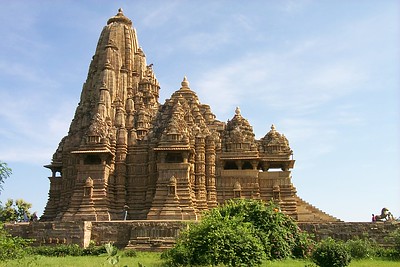
There are three main groups of temples–Western, Eastern, and Southern Group of Temples. Each temple is marvel of India architectural brilliance having intricately detailed stone carving of deities, celestial beings, animals and daily life. The temples are a depiction of both India’s dynamic heritage of spirituality and the cultural openness of the time.
Khajuraho is known for its group of sexual sculptures and identified as a UNESCO World Heritage site, which makes it an attractive tourist destination due to its artistic, historically significant heritage, and cultural legacy. The temples remain a mystery, as also the reasons for the erotic carvings are still debated among historians and archaeologists.
Address: Khajuraho, Chhatarpur, Madhya Pradesh, India
Rishikesh and Haridwar
Rishikesh and Haridwar are twin cities on the banks of the holy River Ganges, in the northern state of Uttarakhand. They are the great spiritual sun in a sense, and they are visited by pilgrims, spiritual seekers and tourists. Haridwar is a sacred place for Hindus and one of their seven holiest locations and is known for its ghats, most notably Har Ki Pauri, where the Ganga Aarti takes place every evening.
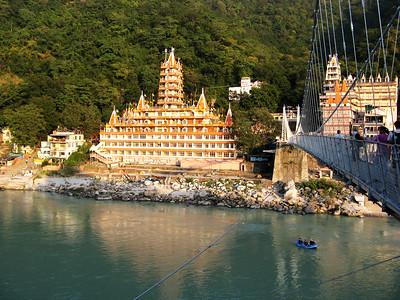
Another key destination for spiritual rejuvenation is Rishikesh, referred to as the “Yoga Capital of the World.” It provides yoga, meditation and Ayurvedic retreats and draws spiritual travelers from across the world. Rishikesh is the gateway to the Himalayas, so it is the embarkation point for pilgrimages to various holy sites.
Both cities are traditio cultural, and spiritual vibrant hubs. Any visit to these holy cities is incomplete without experiencing the serene environment of the ghats, spiritual stories, or just relaxing and enjoying the natural beauty. Rishikesh and Haridwar not only attract spiritual travelers, but also adventure enthusiasts.
Address (Rishikesh): Rishikesh, Uttarakhand, India
Website (Rishikesh): https://rishikesh.gov.in
Address (Haridwar): Haridwar, Uttarakhand, India
Sikkim’s Rumtek Monastery (Sikkim)
Rumtek Monastery is one of the largest and most significant Tibetan Buddhist monasteries in India, located near Gangtok, Sikkim. Located at 5,000 feet, the monastery is a spiritual retreat in the serene beauty of the Himalayas. In fact, it is a major center of the Kagyu lineage of Tibetan Buddhism, with origins going back to the 1500s. The monastery was built starting in the 1960s and is modeled on the famous Tsurphu Monastery in Tibet.
Here, a famous monastery called “Rumtek” houses many monks and preserves ancient teachings and culture of Tibetan Buddhism. The monastery has many halls for worship, colorful murals on the walls and sculptures of Buddhist deities, among others. Various annual ceremonies that are associated with the period are also conducted here and since they are famous like the Buddha Jayanti, therefore, there are people from all over the globe who comes to see the event. The Kagyu Institute of Buddhist Studies is also there, making it an important center of Tibetan Buddhist education in India.
Delhi Top 5 Tourist Places to Visit in Delhi India1 right now
The picturesque views of the nearby terrains, from snow-capped heights to woods and glades, renders this a wonderful place for spiritual aspirants and nature followers alike. Another attraction including the Dharmachakra Centre, which exhibits ancient Tibetan Buddhist texts and scriptures a short walk away.
Web Address: https://www.sikkimtourism.gov.in
Andaman and Nicobar Islands (Andaman)
Situated in the Bay of Bengal, the Andaman and Nicobar Islands make up an Indian archipelago of more than 500 islands, renowned for their unspoilt coasts, vibrant marine ecosystems and verdant tropical rainforests. These islands are the ideal escape destination for nature lovers, adventurers, and for those looking to relax and unwind away from the hustle and bustle of the city.
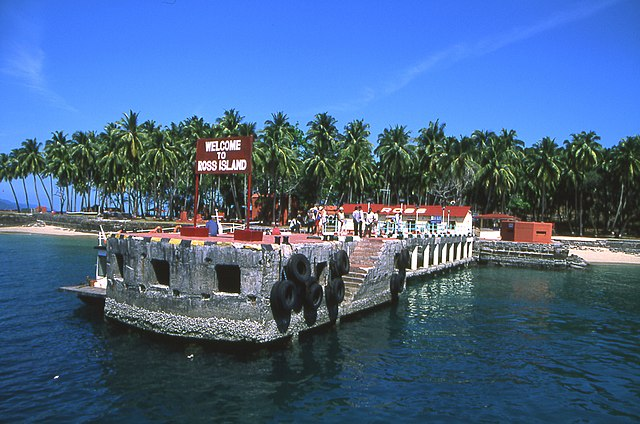
The islands are famous for their very clean waters, which make adventures in water sports like snorkeling, scuba diving, and parasailing. Among the top tourist destinations is Havelock Island with its famous Radhanagar Beach. The islands also have several indigenous tribes in the Jarwa and Onge that live in isolation in the islands and have a traditional life.
Apart from the natural beauty, the Andaman and Nicobar Islands also has a rich colonial history. The Cellular Jail in Port Blair, was used as a colonial prison by the British for the political prisoners during its time is now a national memorial and museum, which is visited by many people every year. Its coral reefs have also made it a popular location for diving fans.
The Andaman and Nicobar islands are ideal for eco-tourism since they have a number of protected zones including the Mahatma Gandhi Marine National Park. Whether you are hiking through the tropical rainforests, lying on the sandy beaches or enjoying the water sports, the islands present an experience of a lifetime.
Web Address: https://www.andaman.gov.in
Ladakh Region (Jammu & Kashmir)
Ladakh: High-Altitude DesertRegionLadakh, the Himalayan desert state between the two great mountain ranges of Great Himalayas and Karakoram Range, is perhaps one of the unique natural wonders and breathtaking places in India. Ladakh is the northernmost region of Jammu & Kashmir, famous for its barren but picturesque landscapes, lively monasteries, and heritage.

With a raw landscape of jagged mountains and unblemished skies, Ladakh is one of the most otherworldly places on Earth. It is a major trekking and biking and adventure sports destination and the iconic Leh-Manali highway is a magnet for motorbiking buffs. With snow-capped massive mountains enclosing both Pangong and Tso Moriri lake, the region also offers picturesque views of both the beautiful lakes.
It also has many of the most famous monasteries of Buddhism, including Hemis, Thiksey and Diskit Monastery, and provides insights into Tibetan Buddhism’s spiritual life and teachings. Festivals like the Hemis festival also attract many tourists and provide a window into the region’s rich cultural traditions.
Ladakh is a peaceful, tranquil, and adventurous place to explore, and so the monasteries, along with the characteristically beautiful landscapes and local way of life, are a must-see location for hotels, catering to travelers looking for peace, adventure, and love. It is a beautiful part of the world and there is no other way to experience its remote beauty and unique way of life.
Web Address: https://www.jktourism.org